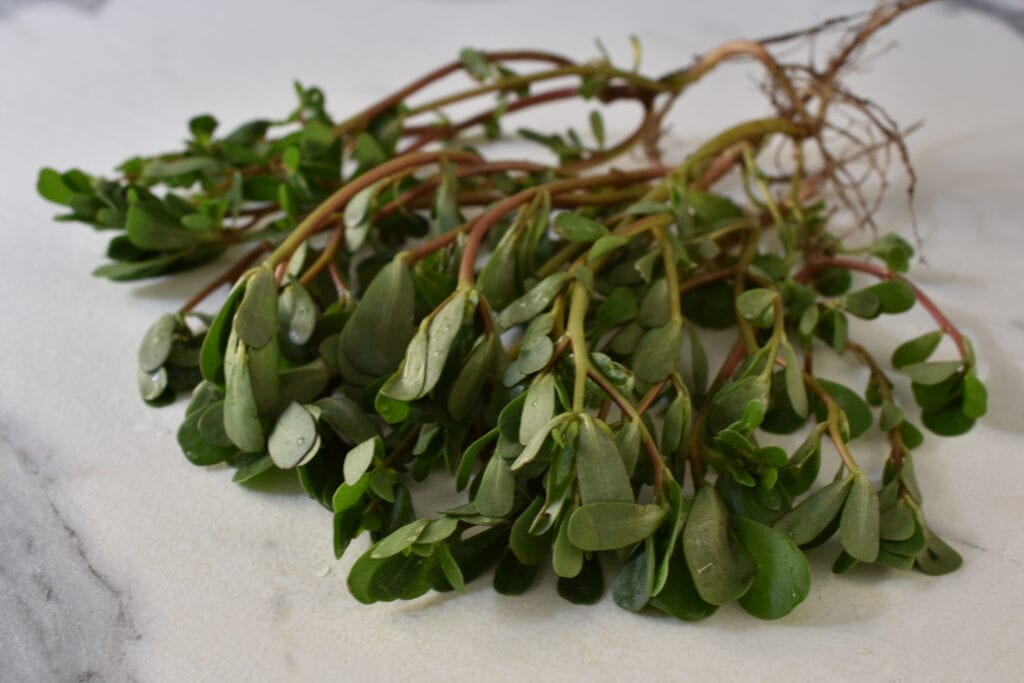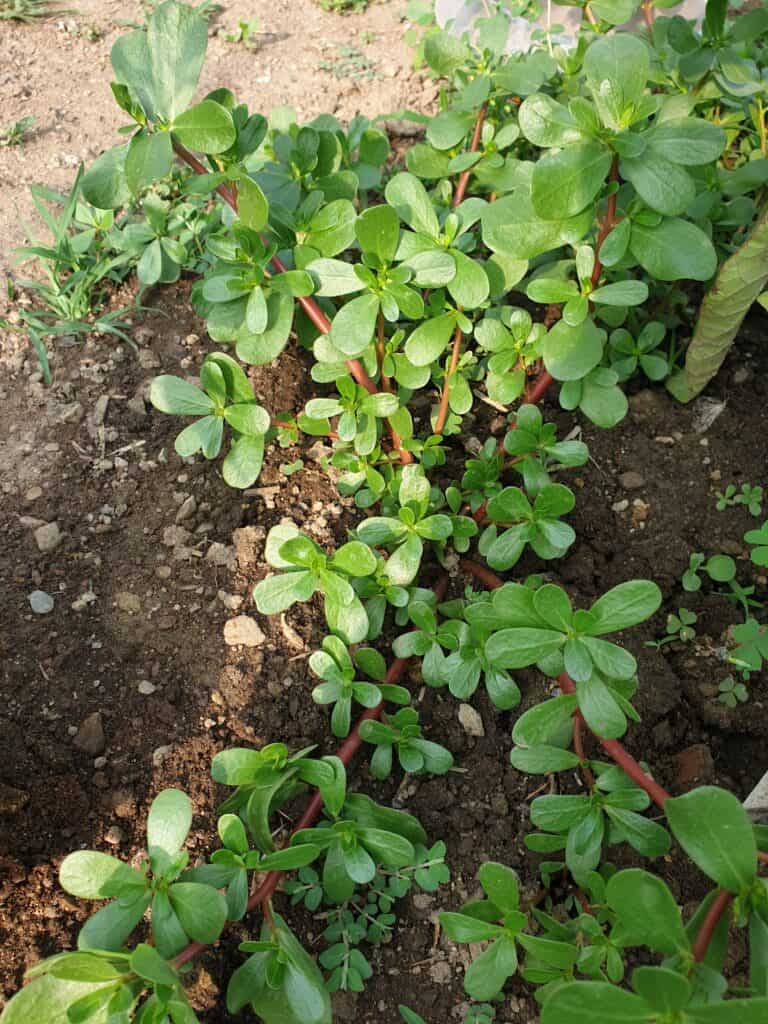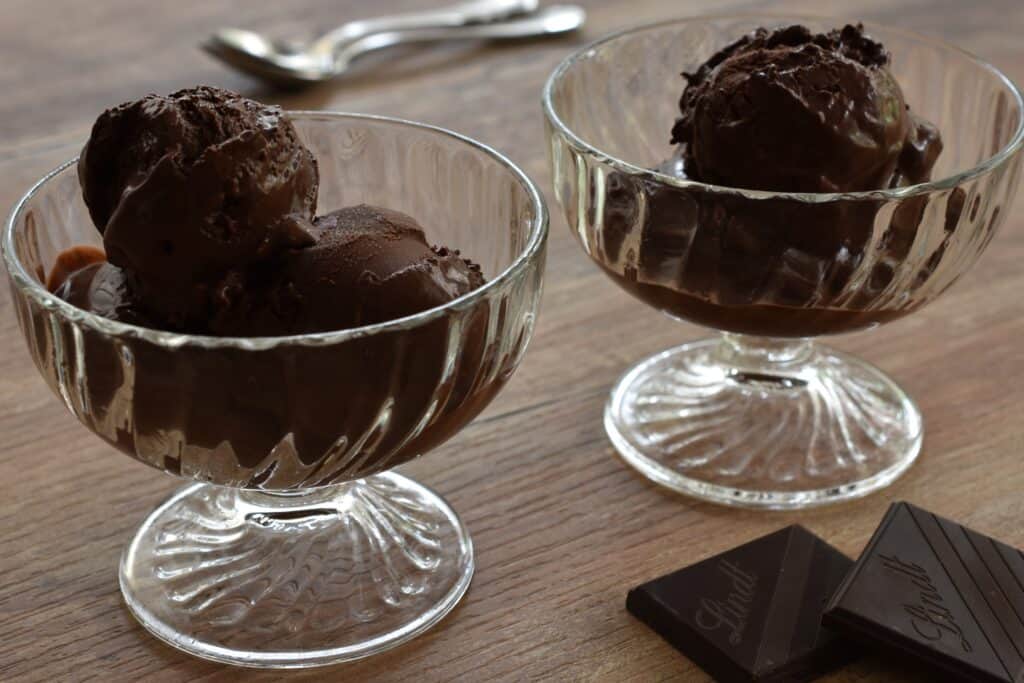This purslane and cucumber salad with vegan yoghurt and dill dressing is crunchy, refreshing and very nutritious! It’s delicious on its own as a light lunch, or you could serve it with some crusty bread to make it more filling. Purslane is immensely popular in Mediterranean and Middle Eastern cuisines, and this salad would make a great side dish to accompany falafel or vegan kofte.
- What is purslane?
- Where to find purslane
- Identification – How to recognise purslane
- How to harvest purslane
- Health benefits of purslane – nutritional properties
- How to use purslane in your kitchen
- How to make purslane and cucumber salad with soya yoghurt and dill dressing
- How to serve purslane and cucumber salad
- How to store leftover purslane and cucumber salad

What is purslane?
What is purslane? To most people, purslane is a weed. I used to weed it out from among the vegetables in my allotment and compost it. Until the day that I found out that it’s not just edible, but it’s actually quite delicious and very versatile.
I was down at the allotment one day when I noticed one of the Turkish ladies washing the stuff under a tap. Curious, I asked her what it was. Portulaca, she replied knowingly. (Portulaca is the Italian word for it.) “Oh, how do you eat it?” I asked, curiosity getting the better of me. She pulled a piece off and munched on it. “Raw”, she said. “In salads. Or we cook it like spinach, sautéed with some oil and garlic.” I thanked her and wished her a pleasant evening and went back to retrieve the purslane I’d just put on top of the compost heap. When I got home I did my research and was surprised to find out that it’s actually very nutritious. Culinarily, it’s used widely throughout the Middle East, North Africa, Asia and Mexico, as well as Greece, Portugal and Turkey.
Purslane is scientifically classed as Portulaca oleracea and is also known as pigweed, little hogweed, fatweed, pusley and wild portulaca. Purslane season is from late spring to late autumn.

Appearance
Purslane is a green, succulent plant that contains approximately 93% water. Its stems have a reddish hue and the leaves are small, smooth and tear-shaped. The leaves grow in clusters along and at the end of the stems. All parts of the purslane plant are edible. The flowers are yellow and appear as the plant matures. Even the little dark brown seed pods are edible – just eat them along with the rest of the plant. Purslane seeds are tiny and brown/black.
Taste
Purslane has a slightly sour and tangy, salty taste, similar to spinach and watercress.
Where to find purslane
It’s highly likely that you’ve got purslane growing wild in your garden or yard if you live in any of the countries I mentioned above. In Italy and Switzerland, it’s mostly considered a weed and, as such, you’ll often find it in gardens, vegetable patches and even pavement cracks. It can also adapt to harsher conditions, including drought, as well as very salty or nutrient-deficient soil.
Identification – How to recognise purslane
Purslane is relatively easy to identify. It is characterized by its succulent leaves and stems, which are thick and store water. The plant grows low to the ground, the stems branching outwards and upwards. The stems are thick, shiny and reddish in colour. The leaves are small, smooth and tear-shaped. The leaves grow in clusters along and at the end of the stems. The flowers are small and yellow and appear as the plant matures. Purslane seed pods are dark brown and grow close to the stem in a cone shape. The seeds, when ripe, scatter naturally when the top of the cone breaks off. Purslane seeds are tiny and brown/black.


How to harvest purslane
Once you’re sure you have identified the plant correctly, you should also make sure you are not consuming plants that could be contaminated by pesticides or other pollutants if growing in non-cultivated areas. Also, avoid purslane which grows in pavement cracks or other places where people walk their dogs.
You can cut the stems close to the base so that the plant will sprout new ones. Alternatively, you can pull it out with the roots. Purslane is very prolific and will quickly grow back after harvesting. Each plant produces thousands and thousands of tiny seeds which will germinate every year as soon as the weather is warm enough.
Health benefits of purslane – nutritional properties
- Purslane has a long history of use in alternative medicine and has properties similar to that of aloe. It can be used externally as a poultice for cuts and burns. Simply break open a purslane leaf and rub it on the affected area as you would with aloe.
- The purslane plant has powerful antibacterial properties and helps strengthen the immune system. Purslane tea is excellent for helping with digestive issues and for relieving colds and bronchitis.
- Purslane contains 93% water, 3% carbohydrates and 2% protein. It’s rich in vitamin E, providing 81% of the recommended daily allowance (RDA). It’s also a good source of vitamin C, B1, B2, B3, B6 and B9, as well as vitamin A. Purslane is also a good source of the following minerals, in order from high to low: magnesium, iron, manganese, potassium, calcium, phosphorus and zinc.
- All these nutrients are to be found in a 100 g portion of purslane, with only 20 calories. This makes it one of the most nutrient-dense foods known to man. So, it makes sense to eat it all summer long and even freeze some for the winter! Purslane can be frozen in its raw state or blanched.
How to use purslane in your kitchen
- Add purslane to salads. Eating it in its raw state, like this purslane and cucumber salad, is the best way to benefit from all the nutrients it contains.
- Toss it in a pan with a little oil and garlic, and eat it as you would spinach. Another relatively simple way of eating it is to stew it in fresh tomato sauce.
- Add it to soups where you need a green leafy vegetable. Purslane is an excellent addition to stews and soups, both from a nutritional point of view as well as flavour.
You can read more facts about purslane here.
How to make purslane and cucumber salad with soya yoghurt and dill dressing
Ingredients
- Purslane
- Cucumber
- Soya yoghurt (unsweetened)
- Dill (fresh or dried)
- Extra virgin olive oil
- Unrefined sea salt

Preparation and seasoning
- Prepare the purslane. Cut off the roots with a knife and break the purslane up into pieces that are approx. 5 cm long. Remove any thick stems, keeping all the leaves and tender stems. Rinse well to remove any residues of soil.
- Peel the cucumber and slice it really finely. I use a mandoline.
- Put the purslane on a plate and arrange the slices of cucumber on top.
- Spoon the yoghurt over the purslane and cucumber. Sprinkle dill all over the yoghurt. Drizzle some good quality extra virgin olive oil over the salad and season with unrefined sea salt. Serve immediately.
How to serve purslane and cucumber salad
Serve this delicious crunchy purslane and cucumber salad as an accompaniment to a Middle Eastern, Greek or Turkish vegan main course. Here are some suggestions: falafel, vegan kofte, imam bayildi, moussaka, papoutsakia.
It’s also great as a light, healthy lunch bowl. Add a couple of slices of sourdough bread or a few falafel to make it more filling.
How to store leftover purslane and cucumber salad
Any salad that has been seasoned with salt and oil won’t last very long – at the most, a couple of hours in the fridge. It goes limp quickly and water comes out of the vegetables due to the process of osmosis. If the salad hasn’t been seasoned, it will keep well in an airtight container in the fridge for a couple of days.
If you liked this purslane and cucumber salad, it would be great if you could give it a star rating and leave a comment below! It helps other readers to find my content and posts and ultimately makes my blog more successful! Thanks so much for your support! Deborah xx
While you’re here on Vegan Hot Stuff, maybe you’d like to take a look at some other popular recipes…






Would you like to receive my recipes as soon as I publish them? Subscribe below!


